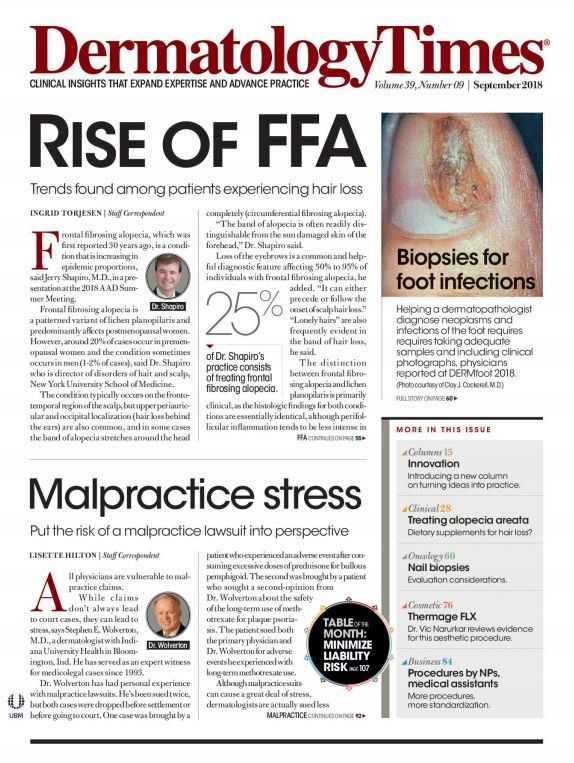- Acne
- Actinic Keratosis
- Aesthetics
- Alopecia
- Atopic Dermatitis
- Buy-and-Bill
- COVID-19
- Case-Based Roundtable
- Chronic Hand Eczema
- Chronic Spontaneous Urticaria
- Drug Watch
- Eczema
- General Dermatology
- Hidradenitis Suppurativa
- Melasma
- NP and PA
- Pediatric Dermatology
- Pigmentary Disorders
- Practice Management
- Precision Medicine and Biologics
- Prurigo Nodularis
- Psoriasis
- Psoriatic Arthritis
- Rare Disease
- Rosacea
- Skin Cancer
- Vitiligo
- Wound Care
Publication
Article
Dermatology Times
Skin cancer occurrence after solid organ transplant
Author(s):
Solid organ transplant recipients experience an average of two cutaneous squamous cell carcinomas following their transplant.
Recipients of solid organ transplants experience an average of 2.6 cutaneous squamous cell carcinomas (cSCCs) during the 7 years after transplant. The latency between the first and second posttransplant cSCC varies widely, found investigators from Duke University, Durham, N.C.
In their retrospective study that spanned 11 years, data from 143 renal, hepatic, and cardiothoracic adult transplant patients at Duke Medical Center who experienced a postttransplant cSCC were reviewed. Mean age at transplantation was 59.3 years. Of the 143 patients, the mean number of cSCCs was 2.6 over a mean follow-up of 7.2 years.
Twenty patients (14.0%) experienced their second cSCC within 6 months of their initial posttransplant cSCC. The renal group experienced a mean of 3.0 cSCCs compared with a mean of 2.4 in the hepatic group and 2.6 in the cardiothoracic group (P=0.60). Slightly more than half (n=76; 52.8%) experienced 2 or more cSCCs, with a mean latency time between the first and second cSCC of 1.9 years.
The patients who had only 1 cSCC had greater exposure to voriconazole (P<0.001) and mycophenolate (P<0.001) than those who developed at least 2 cSCCs, whereas those who developed at least 2 cSCCs had greater exposure to azathioprine (P=0.003).
Morbidity and mortality are worse in the patients with transplant-associated cSCC compared with the general population without curative systemic treatment options for disseminated disease, the authors noted.
They wrote, “It is difficult to predict which solid organ transplant recipients will experience a second primary cSCC following transplant. Therefore, ongoing vigilance with frequent dermatologic surveillance beyond the first 2 to 3 years after the initial posttransplant cSSC diagnosis should be considered owing to the increased risk in this population.”
REFERENCCE
Charles J. Puza, BA; Adela R. Cardones, MD; Paul J. Mosca, MD, PhD, MBA. “Timing and number of cutaneous squamous cell carcinomas in transplant recipients,” JAMA Dermatology. 2018;154(6):727-728. doi:10.1001/jamadermatol.2018.0856.

Newsletter
Like what you’re reading? Subscribe to Dermatology Times for weekly updates on therapies, innovations, and real-world practice tips.























